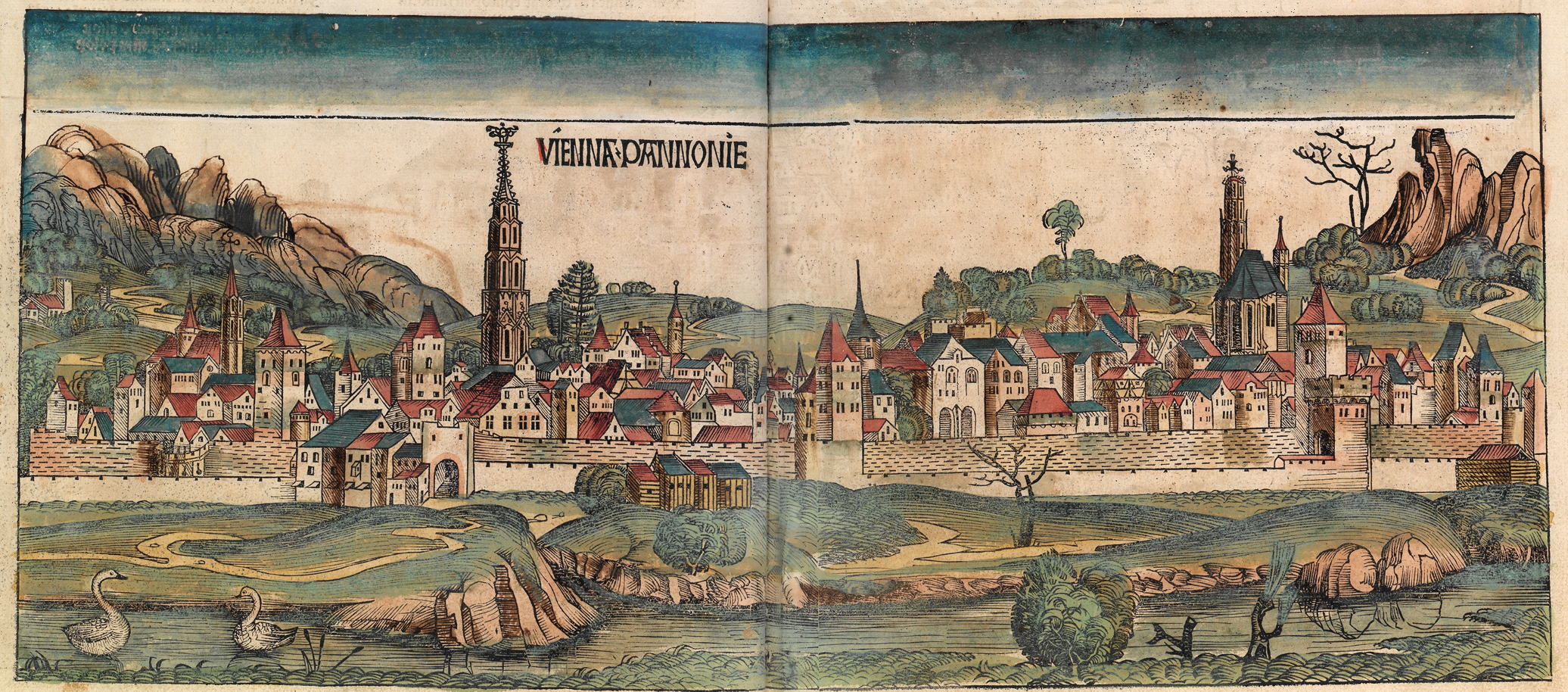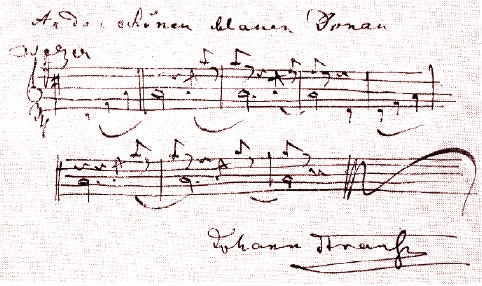|
Lob Der Frauen
Lob der Frauen (''Praise of Women''), Op. 315, is a polka-mazurka composed by Johann Strauss II. The composition was first performed at the Vienna Volksgarten en, Viennese , iso_code = AT-9 , registration_plate = W , postal_code_type = Postal code , postal_code = , timezone = CET , utc_offset = +1 , timezone_DST ... at the 1867 Carnival in Vienna. The work was performed alongside other compositions that Strauss had written around that period, including the famous waltzes '' Blue Danube'' and '' Artist's Life''. References Compositions by Johann Strauss II 1867 compositions Polkas {{classical-composition-stub ... [...More Info...] [...Related Items...] OR: [Wikipedia] [Google] [Baidu] |
Opus Number
In musicology, the opus number is the "work number" that is assigned to a musical composition, or to a set of compositions, to indicate the chronological order of the composer's production. Opus numbers are used to distinguish among compositions with similar titles; the word is abbreviated as "Op." for a single work, or "Opp." when referring to more than one work. To indicate the specific place of a given work within a music catalogue, the opus number is paired with a cardinal number; for example, Beethoven's Piano Sonata No. 14 in C-sharp minor (1801, nicknamed ''Moonlight Sonata'') is "Opus 27, No. 2", whose work-number identifies it as a companion piece to "Opus 27, No. 1" ( Piano Sonata No. 13 in E-flat major, 1800–01), paired in same opus number, with both being subtitled ''Sonata quasi una Fantasia'', the only two of the kind in all of Beethoven's 32 piano sonatas. Furthermore, the ''Piano Sonata, Op. 27 No. 2, in C-sharp minor'' is also catalogued as "Sonata No. 14", ... [...More Info...] [...Related Items...] OR: [Wikipedia] [Google] [Baidu] |
Polka
Polka is a dance and genre of dance music originating in nineteenth-century Bohemia, now part of the Czech Republic. Though associated with Czech culture, polka is popular throughout Europe and the Americas. History Etymology The term ''polka'' referring to the dance is derived from the Czech word ''Polka'' meaning "Polish woman" (feminine form corresponding to ''Polák'', a Pole)."polka, n.". Oxford University Press. (accessed 11 July 2012). Czech cultural historian Čeněk Zíbrt also attributes the term to the Czech word ''půlka'' (half), referring to both the half-tempo and the half-jump step of the dance.Čeněk Zíbrt, "Jak se kdy v Čechách tancovalo: dějiny tance v Čechách, na Moravě, ve Slezsku a na Slovensku z věků nejstarších až do nové doby se zvláštním zřetelem k dějinám tance vůbec", Prague, 189(Google eBook)/ref> The word was widely introduced into the major European languages in the early 1840s. Origin and popularity The polka' ... [...More Info...] [...Related Items...] OR: [Wikipedia] [Google] [Baidu] |
Mazurka
The mazurka (Polish: ''mazur'' Polish ball dance, one of the five Polish national dances and ''mazurek'' Polish folk dance') is a Polish musical form based on stylised folk dances in triple meter, usually at a lively tempo, with character defined mostly by the prominent mazur's "strong accents unsystematically placed on the second or third beat". The mazurka, alongside the polka dance, became popular at the ballrooms and salons of Europe in the 19th century, particularly through the notable works by Frédéric Chopin. The mazurka (in Polish ''mazur'', the same word as the mazur) and mazurek (rural dance based on the mazur) are often confused in Western literature as the same musical form. History The folk origins of the ''mazurka'' are three Polish folk dances which are: * '' mazur'', most characteristic due to its inconsistent rhythmic accents, * slow and melancholic ''kujawiak'', * fast ''oberek''. The ''mazurka'' is always found to have either a triplet, trill, dot ... [...More Info...] [...Related Items...] OR: [Wikipedia] [Google] [Baidu] |
Johann Strauss II
Johann Baptist Strauss II (25 October 1825 – 3 June 1899), also known as Johann Strauss Jr., the Younger or the Son (german: links=no, Sohn), was an Austrian composer of light music, particularly dance music and operettas. He composed over 500 waltzes, polkas, quadrilles, and other types of dance music, as well as several operettas and a ballet. In his lifetime, he was known as "The Waltz King", and was largely responsible for the popularity of the waltz in Vienna during the 19th century. Some of Johann Strauss's most famous works include "The Blue Danube", "Kaiser-Walzer" (Emperor Waltz), "Tales from the Vienna Woods", "Frühlingsstimmen", and the "Tritsch-Tratsch-Polka". Among his operettas, ''Die Fledermaus'' and ''Der Zigeunerbaron'' are the best known. Strauss was the son of Johann Strauss I and his first wife Maria Anna Streim. Two younger brothers, Josef and Eduard Strauss, also became composers of light music, although they were never as well known as their brot ... [...More Info...] [...Related Items...] OR: [Wikipedia] [Google] [Baidu] |
Vienna Volksgarten
en, Viennese , iso_code = AT-9 , registration_plate = W , postal_code_type = Postal code , postal_code = , timezone = CET , utc_offset = +1 , timezone_DST = CEST , utc_offset_DST = +2 , blank_name = Vehicle registration , blank_info = W , blank1_name = GDP , blank1_info = € 96.5 billion (2020) , blank2_name = GDP per capita , blank2_info = € 50,400 (2020) , blank_name_sec1 = HDI (2019) , blank_info_sec1 = 0.947 · 1st of 9 , blank3_name = Seats in the Federal Council , blank3_info = , blank_name_sec2 = GeoTLD , blank_info_sec2 = .wien , website = , footnotes = , image_blank_emblem = Wien logo.svg , blank_emblem_size = Vienna ( ; german: Wien ; bar, ... [...More Info...] [...Related Items...] OR: [Wikipedia] [Google] [Baidu] |
Vienna
en, Viennese , iso_code = AT-9 , registration_plate = W , postal_code_type = Postal code , postal_code = , timezone = CET , utc_offset = +1 , timezone_DST = CEST , utc_offset_DST = +2 , blank_name = Vehicle registration , blank_info = W , blank1_name = GDP , blank1_info = € 96.5 billion (2020) , blank2_name = GDP per capita , blank2_info = € 50,400 (2020) , blank_name_sec1 = HDI (2019) , blank_info_sec1 = 0.947 · 1st of 9 , blank3_name = Seats in the Federal Council , blank3_info = , blank_name_sec2 = GeoTLD , blank_info_sec2 = .wien , website = , footnotes = , image_blank_emblem = Wien logo.svg , blank_emblem_size = Vienna ( ; german: Wien ; ba ... [...More Info...] [...Related Items...] OR: [Wikipedia] [Google] [Baidu] |
Waltz
The waltz ( ), meaning "to roll or revolve") is a ballroom and folk dance, normally in triple ( time), performed primarily in closed position. History There are many references to a sliding or gliding dance that would evolve into the waltz that date from 16th-century Europe, including the representations of the printmaker Hans Sebald Beham. The French philosopher Michel de Montaigne wrote of a dance he saw in 1580 in Augsburg, where the dancers held each other so closely that their faces touched. Kunz Haas (of approximately the same period) wrote, "Now they are dancing the godless ''Weller'' or ''Spinner''."Nettl, Paul. "Birth of the Waltz." In ''Dance Index'' vol 5, no. 9. 1946 New York: Dance Index-Ballet Caravan, Inc. pages 208, 211 "The vigorous peasant dancer, following an instinctive knowledge of the weight of fall, uses his surplus energy to press all his strength into the proper beat of the bar, thus intensifying his personal enjoyment in dancing." Around 1750, ... [...More Info...] [...Related Items...] OR: [Wikipedia] [Google] [Baidu] |
The Blue Danube
"The Blue Danube" is the common English title of "An der schönen blauen Donau", Op. 314 (German for "By the Beautiful Blue Danube"), a waltz by the Austrian composer Johann Strauss II, composed in 1866. Originally performed on 15 February 1867 at a concert of the Wiener Männergesang-Verein (Vienna Men's Choral Association), it has been one of the most consistently popular pieces of music in the classical repertoire. Its initial performance was considered only a mild success, however, and Strauss is reputed to have said, "The devil take the waltz, my only regret is for the coda—I wish that had been a success!" After the original music was written, the words were added by the Choral Association's poet, Joseph Weyl. Strauss later added more music, and Weyl needed to change some of the words. Strauss adapted it into a purely orchestral version for the 1867 Paris World's Fair, and it became a great success in this form. The instrumental version is by far the most commonl ... [...More Info...] [...Related Items...] OR: [Wikipedia] [Google] [Baidu] |
Compositions By Johann Strauss II
Composition or Compositions may refer to: Arts and literature *Composition (dance), practice and teaching of choreography * Composition (language), in literature and rhetoric, producing a work in spoken tradition and written discourse, to include visuals and digital space * Composition (music), an original piece of music and its creation *Composition (visual arts), the plan, placement or arrangement of the elements of art in a work * ''Composition'' (Peeters), a 1921 painting by Jozef Peeters *Composition studies, the professional field of writing instruction * ''Compositions'' (album), an album by Anita Baker *Digital compositing, the practice of digitally piecing together a video Computer science *Function composition (computer science), an act or mechanism to combine simple functions to build more complicated ones * Object composition, combining simpler data types into more complex data types, or function calls into calling functions History *Composition of 1867, Austro-Hungari ... [...More Info...] [...Related Items...] OR: [Wikipedia] [Google] [Baidu] |
1867 Compositions
Events January–March * January 1 – The Covington–Cincinnati Suspension Bridge opens between Cincinnati, Ohio, and Covington, Kentucky, in the United States, becoming the longest single-span bridge in the world. It was renamed after its designer, John A. Roebling, in 1983. * January 8 – African-American men are granted the right to vote in the District of Columbia. * January 11 – Benito Juárez becomes Mexican president again. * January 30 – Emperor Kōmei of Japan dies suddenly, age 36, leaving his 14-year-old son to succeed as Emperor Meiji. * January 31 – Maronite nationalist leader Youssef Bey Karam leaves Lebanon aboard a French ship for Algeria. * February 3 – ''Shōgun'' Tokugawa Yoshinobu abdicates, and the late Emperor Kōmei's son, Prince Mutsuhito, becomes Emperor Meiji of Japan in a brief ceremony in Kyoto, ending the Late Tokugawa shogunate. * February 7 – West Virginia University is established in Morgantown, West Virginia. * February 13 ... [...More Info...] [...Related Items...] OR: [Wikipedia] [Google] [Baidu] |
.jpg)
.jpg)



